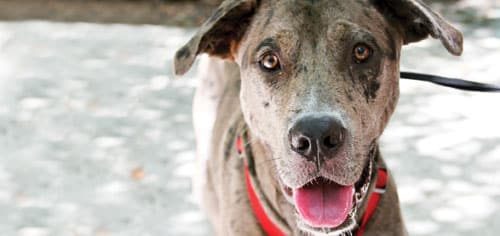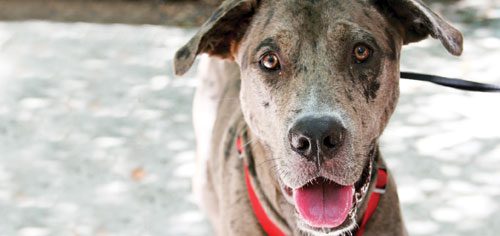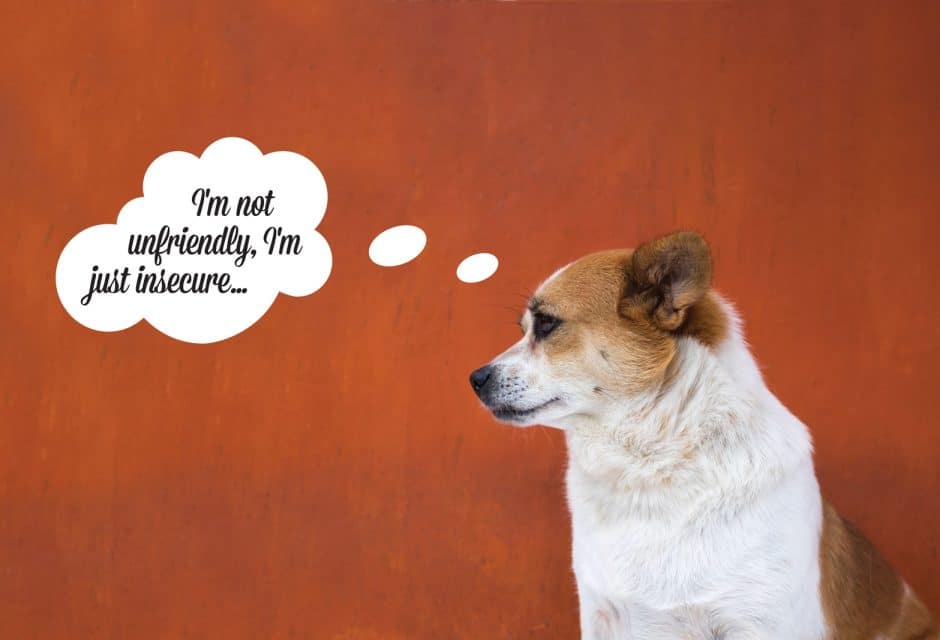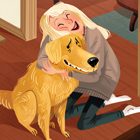

Ask an Expert – Rewarding Bad Habits
Are you inadvertently encouraging your dog's bad behaviour?
Q: My husband always pets our Lab/ Catahoula Leopard Dog cross, Jakey, when she bumps his knee or leans against him, and he riles her up to chase squirrels when we’re out for a walk, even though I’m trying to dissuade her from chasing cats. I’ve tried telling him he’s inadvertently encouraging behaviour we don’t want, but he doesn’t think indulging her makes any difference. Am I right? —Stricter in Strathcona
A: One of the most fascinating and funny parts of my job as a dog trainer is wearing the hat of couple’s referee and counsellor. Inevitably, when two adults are rearing a fur kid, debates on what training methods to use and how to interact with the furry bundle of joy can cause rifts within a relationship. Sit down on the therapy couch and we’ll get this dog training couple counseling session started!
Wife, you are soooo right (of course!). We need to train your hubby to train Jakey. Hubby, you have to stop teaching Jakey to seek and gain attention by physically prompting you; unless, of course, you are okay with her knocking over a child, unsuspecting adult, or elderly person. Oops, see: I am useless as an unbiased counsellor. So, let’s talk dog, sans any temperamental couple’s issues in the mix.
There is a saying in the dog training world, “watch what you train.” This refers to actions of owners (and others) that inadvertently encourage and reinforce undesired behaviours; turning them into bad habits.
In the case of Jakey, if you pet her after she leans against you or nudges you, you are teaching her that is a strong and useful tool for communicating her desires. While you may be strong enough to withstand this form of communication, a child may be flattened by Jakey’s boisterous gestures.
With regards to chasing squirrels, unless you are a dog-dork like myself who will teach Jakey to discriminate stimuli, it is better to teach her to remain calm when confronted with squirrels (as well as cats, birds, and other furry things). It’s unfair to expect Jakey to understand that sometimes she can go crazy at sight of a squirrel and other times must remain calm when presented with fleeting furry things, as when your wife is walking her. Both of these issues fall under the broad umbrella of teaching Jakey impulse control. No matter how excited, Jakey should offer calm and controlled behaviour. Mannerly behaviour ensures safety for her and others.
With regards to attention seeking, you must tell Jakey what you expect of her. If she wants to be petted, she must sit. When Jakey is approaching, tell her to SIT before petting her (and before she has an opportunity to nudge you). If you are not paying attention and she catches you off guard with a nudge, simply ignore the action. Do not look at her or say anything. Instead, wait for her to sit. THEN say, “Good!” and begin giving her attention. During this new learning process, Jakey should be on leash when you have company. This way, you can ask her to sit, so that others are not inadvertently training Jakey to lean and nudge. Some greeters and visitors will respond to her nudging with, “it’s ok, I love dogs!” Be consistent, though, for Jakey’s sake.
In the case of squirrels (and cats), teach Jakey to “leave it” and encourage her to look at you while remaining calm on leash in the presence of squirrels. Bring along a favourite squeaky toy. As you are entering squirrel territory, pop out the toy and encourage Jakey to carry that along. Alternatively, ask Jakey to give you eye contact, “Jakey watch me!” Give her yummy treats as reinforcement for ignoring the squirrels and paying attention to you.
Practicing impulse control is easy and there are many opportunities to do so daily. Simply ask Jakey to sit before you throw her favourite toy, fill her food and water dish, or allow her to go outdoors to play. Soon Jakey will start asking you for these things by sitting nicely (without being prompted), replacing the lean, nudge, and other frenzied behaviour!
While we’re on the topic of training dogs and men, who will train men to close the toilet seat after using it—making it a less-accessible water dish for dogs?
Join the newsletter and never miss out on dog content again!
"*" indicates required fields
By clicking the arrow, you agree to our web Terms of Use and Privacy & Cookie Policy. Easy unsubscribe links are provided in every email.





